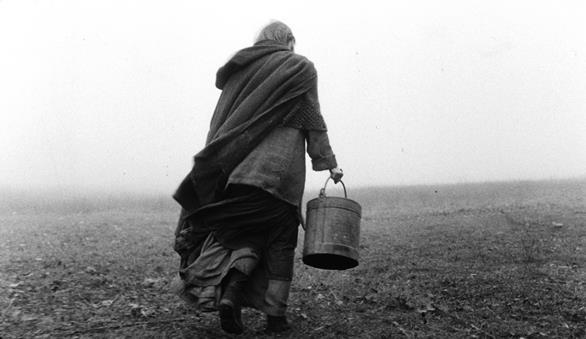 "In Turin on 3rd January, 1889, Friedrich Nietzsche steps out of the doorway of number six, Via Carlo Albert. Not far from him, the driver of a hansom cab is having trouble with a stubborn horse. Despite all his urging, the horse refuses to move, whereupon the driver loses his patience and takes his whip to it. Nietzsche comes up to the throng and puts an end to the brutal scene, throwing his arms around the horse’s neck, sobbing. His landlord takes him home, he lies motionless and silent for two days on a divan until he mutters the obligatory last words, and lives for another ten years, silent and demented, cared for by his mother and sisters. We do not know what happened to the horse.”
"In Turin on 3rd January, 1889, Friedrich Nietzsche steps out of the doorway of number six, Via Carlo Albert. Not far from him, the driver of a hansom cab is having trouble with a stubborn horse. Despite all his urging, the horse refuses to move, whereupon the driver loses his patience and takes his whip to it. Nietzsche comes up to the throng and puts an end to the brutal scene, throwing his arms around the horse’s neck, sobbing. His landlord takes him home, he lies motionless and silent for two days on a divan until he mutters the obligatory last words, and lives for another ten years, silent and demented, cared for by his mother and sisters. We do not know what happened to the horse.”
These are the opening words of Béla Tarr’s The Turin Horse, the latest (and apparently last) film from the Hungarian master. Spoken against a black screen, they entice and perplex the viewer, utilizing a real-life, haunting story to set up the events to come. Immediately following the final line, the first scene opens – an extended sequence of the aforementioned horse returning home following the encounter with Nietzsche. There is no dialogue spoken, and no further conventional storytelling technique used; the camera swoops and slides and hovers above and about the equine beast, only occasionally capturing his master in the peripheries of the frame. The stark black & white cinematography captures the weathered face of the horse, and a howling wind dominates the soundtrack. Nothing happens, but it is utterly mesmerizing.
This is my first taste of Tarr, but I’m told this is what to expect: long, perfectly composed sequences where little narrative purpose is served, yet remain hypnotic due to their stylistic intensity and deep implied meaning. Gus Van Sant is a fan, and his Gerry follows much the same approach; if you hated that film, then, perhaps this one isn’t for you. But as a Gerry lover, and Tarr virgin, I found myself entranced and intrigued by this two-and-a-half-hour minimalist tale. Only 30 long-take shots comprise the film, which depicts the day-to-day rural lives of the horse driver (János Derzsi) and his daughter (Erika Bók) over a weeklong windstorm. Every day is exactly the same, and we are gradually shown more of their routine as the week progresses and the wind intensifies. Liminal characters enter and exit, but have no real bearing on the narrative (such as it is) - a neighbour asks to borrow some alcohol, gypsies steal some water, etc. The horse stops eating, and eventually the daughter does too. And then it’s over.
It’s more than likely that many will hate this film. Compared to even the typical European ‘art film’, it’s slow, boring, and (some would say) pointless. What little dialogue is sparse and functional (save for two notable monologues, one of which is dismissed in the film’s funniest moment), and there’s no obvious thematic overtones or analogous meaning, apart from some implied Nietzschean concepts. And yet there’s something rather profound and captivating about these ritualistic lives and the way Tarr portrays them. He never hammers us over the head nor delves into pretentious territory with his approach, deliberate and arduous it may be. He almost dares one to find meaning in his images, ultimately revealing none. In that sense it’s also a deeply pessimistic film – if life is only boring routine and boiled potato eating, then what’s the point?
In general, though, this is a work you must allow to get under your skin in order to appreciate it. It doesn’t make it easy on the audience, but there’s also no pandering and thus no condescension on the part of the filmmaker; he merely presents his art in the manner best suited for the material. Granted, this is the type of film made primarily for the festival circuit and cinephile audience, but it’s still an expertly crafted and supremely haunting work; if you let it, it’s a compelling, powerful experience.

